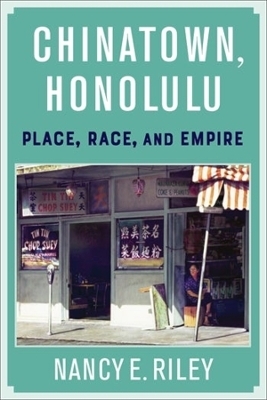
Chinatown, Honolulu
Place, Race, and Empire
Seiten
2024
Columbia University Press (Verlag)
978-0-231-19679-6 (ISBN)
Columbia University Press (Verlag)
978-0-231-19679-6 (ISBN)
The Chinese experience in Hawai‘i has long been told as a story of inclusion and success. During the Cold War, the United States touted the Chinese community in Hawai‘i as an example of racial harmony and American opportunity, claiming that all ethnic groups had the possibility to attain middle-class lives. Today, Honolulu’s Chinatown is not only a destination for tourism and consumption but also a celebration of Chinese accomplishments, memorializing past discrimination and present prominence within a framework of multiculturalism. This narrative, however, conceals many other histories and processes that played crucial roles in shaping Chinatown.
This book offers a critical account of the history of Chinese in Hawai‘i from the mid-nineteenth century to the present in this context of U.S. empire, settler colonialism, and racialization. Nancy E. Riley foregrounds elements that are often left out of narratives of Chinese history in Hawai‘i, particularly the place of Native Hawaiians, geopolitics and U.S. empire building, and the ongoing construction of race and whiteness. Tracing how Chinatown became a site of historical remembrance, she argues that it is also used to reinforce the ideology of neoliberal multiculturalism, which upholds racial hierarchy by lauding certain ethnic groups while excluding others. An insightful and in-depth analysis of the story of Honolulu’s Chinatown, this book offers new perspectives on the making of the racial landscape of Hawai‘i and the United States more broadly.
This book offers a critical account of the history of Chinese in Hawai‘i from the mid-nineteenth century to the present in this context of U.S. empire, settler colonialism, and racialization. Nancy E. Riley foregrounds elements that are often left out of narratives of Chinese history in Hawai‘i, particularly the place of Native Hawaiians, geopolitics and U.S. empire building, and the ongoing construction of race and whiteness. Tracing how Chinatown became a site of historical remembrance, she argues that it is also used to reinforce the ideology of neoliberal multiculturalism, which upholds racial hierarchy by lauding certain ethnic groups while excluding others. An insightful and in-depth analysis of the story of Honolulu’s Chinatown, this book offers new perspectives on the making of the racial landscape of Hawai‘i and the United States more broadly.
Nancy E. Riley is A. Myrick Freeman Professor of Social Sciences at Bowdoin College. Her most recent book is Controlling Reproduction: Women, Society, and State Power (with Nilanjana Chatterjee, 2023).
Acknowledgments
Notes on Terminology
Introduction: Race and Place in the Empire
1. Setting the Stage: Chinese Experience Before 1900
2. 1900 to 1930: Destruction of Chinatown and the (Re)building of a Chinese American Community
3. World War II Comes to Hawai‘i: 1930s through 1945
4. Statehood Amid Cold War Politics
5. Reconstructing Chinatown for a New Era
6. Chinatown Today: Confluence of Past and Present
Notes
Bibliography
Index
| Erscheinungsdatum | 19.04.2024 |
|---|---|
| Verlagsort | New York |
| Sprache | englisch |
| Maße | 152 x 229 mm |
| Themenwelt | Geisteswissenschaften ► Geschichte ► Regional- / Ländergeschichte |
| Sozialwissenschaften ► Ethnologie | |
| Sozialwissenschaften ► Soziologie | |
| ISBN-10 | 0-231-19679-2 / 0231196792 |
| ISBN-13 | 978-0-231-19679-6 / 9780231196796 |
| Zustand | Neuware |
| Haben Sie eine Frage zum Produkt? |
Mehr entdecken
aus dem Bereich
aus dem Bereich
Erinnerungen
Buch | Softcover (2024)
Pantheon (Verlag)
16,00 €
Universalgelehrter, Polarreisender, Entdecker
Buch | Hardcover (2024)
mareverlag
28,00 €


